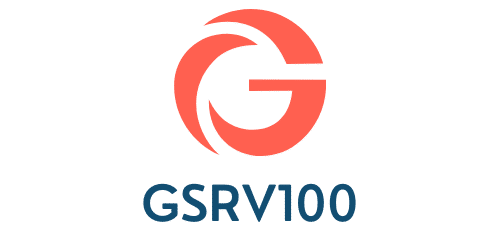How to Utilize Feedback Loops to Enhance Athlete Development in Individual Sports?

In the realm of sports, the process of growth and development needs more than just the physical training and skill refinement. It demands effective communication, constant feedback and comprehensive learning strategies to sculpt an athlete’s potential into top-notch performance. As coaches, your role extends beyond teaching the technicalities of the sport. It merges into the sphere of offering feedback, creating learning opportunities, and fostering an environment conducive to athlete’s development.
Building a Powerful Coaching-Feedback Process
What lies at the heart of effective coaching is the process of feedback. A two-way process, it includes not just the coach providing inputs to the athletes, but also athletes communicating their thoughts, concerns, and progress to the coach. This robust feedback loop acts as a pivotal tool in an athlete’s development journey. But how can it be utilized effectively?
Lire également : What Strategies Can Be Employed to Revitalize Interest in Declining Traditional Sports?
Every feedback loop should begin with data collection. By observing your athletes during practice sessions, capturing video footage of their performance, or conducting skill assessment tests, you can gather valuable data. This data will serve as the foundation to build and refine your feedback.
Remember, feedback should be specific, timely and constructive. It should focus on the strengths and weaknesses observed during practice or competition, rather than on the athlete’s personality. Don’t forget to frame the feedback in a way that encourages the athletes and motivates them to improve. Make sure to allow time for athletes to reflect on the feedback and respond with their perceptions and feelings.
En parallèle : How to Design Injury Prevention Programs for Adolescent Athletes in High-Risk Sports?
Video Analysis: A Game-Changing Tool for Feedback
With technology pervading the sports arena, video analysis has emerged as a game-changing tool for providing feedback. It allows athletes to visually comprehend their performance, grasp the tiny details of their technique, and understand the areas where they need to improve.
Coaches can use video analysis to break down the athlete’s performance into smaller segments and provide detailed feedback on each part. They can also use it to demonstrate successful techniques, compare athlete’s performance with previous sessions or with other athletes, and even visualize the desired outcomes. This objective and visual feedback can enhance athletes’ understanding, promote self-evaluation, and expedite their skill development.
Strategies for Effective Athlete Learning
Creating a feedback loop isn’t just about providing feedback. It’s equally essential to foster athlete learning. As coaches, you should implement strategies that promote effective learning and facilitate the assimilation of feedback.
This might include setting clear, individualized goals for the athletes that align with their skill level and the feedback provided. Incorporating a variety of practice scenarios can also enhance learning. For instance, mixing up different skills within a practice session or varying the practice conditions can challenge the athletes and promote deeper learning.
Additionally, encouraging athletes to self-reflect on their performance and the feedback they receive can empower them to take ownership of their learning process. By promoting self-reflection, athletes can learn to identify their strengths and weaknesses, make connections between feedback and performance, and devise their strategies for improvement.
Enhancing Communication: The Key to Successful Coaching
Beyond feedback and learning, communication is another vital aspect that can enhance athlete development. It’s the thread that weaves together the coach and athletes, creating a platform for exchange of information, ideas, and feelings.
Coaches should strive to create an open and honest communication environment where athletes feel comfortable sharing their thoughts, concerns, and aspirations. Regular one-on-one discussions, team meetings, and informal chats can help establish this communication channel.
Coaches should also pay attention to their communication style. Using positive language, affirming athlete’s efforts, and being empathetic can foster a positive relationship with the athletes. It can increase their receptiveness to feedback and readiness to learn, thereby aiding their development.
The Role of Time in Athlete Development
Time plays a crucial role in athlete development. It has a profound impact on training schedules, practice sessions, recovery periods, and long-term development plans.
Coaches should ensure that feedback is provided at an appropriate time – immediately after a training session or a competition when the performance is still fresh in the athlete’s mind. They should also take into account the time needed for athletes to process and implement the feedback into their practice.
Patience is key when it comes to athlete development. It takes time to build skills, assimilate feedback, and make improvements. Therefore, coaches should avoid rushing the process and adopt a long-term perspective that focuses on steady development and sustainable performance.
In the dynamic world of sports, helping athletes realize their full potential is a daunting task. But with a strong feedback loop, reinforced by effective communication and learning strategies, coaches can significantly enhance athlete development. And remember, while you guide your athletes toward their goals, it’s the journey – the process of learning, improving, and growing – that truly matters.
Integration of Virtual Training into the Coaching Practice
In the ever-evolving landscape of sports coaching, the integration of virtual training into the coaching practice is becoming increasingly prevalent. This innovative approach provides a unique avenue for coaches and athletes to communicate, train, and grow, irrespective of physical location.
Virtual training offers several benefits that can enhance the athlete development process. Firstly, it extends the scope of training sessions beyond the confines of training facilities. Athletes can leverage this flexibility to train at their convenience, balance their professional and personal commitments, and manage their energy levels more effectively.
Virtual training can also facilitate real-time feedback and communication. Coaches can observe their athletes’ performance on a separate window during online training sessions, provide immediate feedback, and discuss issues or concerns promptly. This real-time interaction can enhance the validity of feedback, speed up the skill acquisition process, and foster a stronger coach-athlete relationship.
In addition, virtual training can boost the effectiveness of video analysis. By providing a platform for athletes and coaches to review and discuss video footage together, it can enrich the feedback process. Coaches can highlight key aspects, clarify doubts, and demonstrate corrections, while athletes can share their perspective, ask questions, and receive explanations.
But remember, the success of virtual training largely depends upon the communication model adopted by the coaches. They need to be attentive to their athletes’ needs, be responsive to their queries, and provide clear, concise, and constructive feedback.
Sports Management: Designing and Implementing Effective Training Programs
A critical aspect that contributes to athlete development is the design and implementation of effective training programs. In the realm of sports management, coaches hold the significant responsibility of developing a comprehensive and progressive program that promotes skill development.
To create an effective training program, coaches should first conduct a thorough analysis of the athletes’ current skill level, strengths, weaknesses, and performance goals. This analysis will provide the basis to design a program that addresses the specific needs and goals of the athletes, and aligns with the feedback provided.
The training program should include a mix of skill training, strength and conditioning exercises, and recovery activities. It should also provide opportunities for athletes to practice under different conditions and scenarios. This variety will challenge the athletes, prevent boredom, and facilitate a well-rounded development.
Also, coaches should ensure that the training program is adaptable. They should be open to making adjustments based on the athletes’ progress, feedback, and changing needs. Regular monitoring and evaluation of the program can help identify areas of improvement and make necessary modifications.
By offering a structured and flexible training program, coaches can guide their athletes toward their performance goals more effectively. And in doing so, they can contribute to the athletes’ overall development, both as individuals and as sports professionals.
Conclusion: Emphasizing the Process Over the Outcome
In the journey of athlete development, it’s crucial to remember that the process is just as important, if not more, than the outcome. The process involves learning, growing, making mistakes, and improving – elements that shape an athlete’s character, resilience, and performance.
As coaches, your role is to guide your athletes through this process. To provide them with the tools – feedback, communication, learning opportunities, and training programs – to navigate their journey successfully. To create an environment that fosters growth, encourages self-reflection, promotes autonomy, and values effort.
In essence, the goal of coaching should not only be about developing top-notch athletes, but also about nurturing individuals who are confident, resilient, and life-long learners. Because in the end, it’s not just about the medals won or records broken, but about the individuals developed, the skills acquired, and the lessons learned along the way. And that’s the real triumph of sports coaching.
